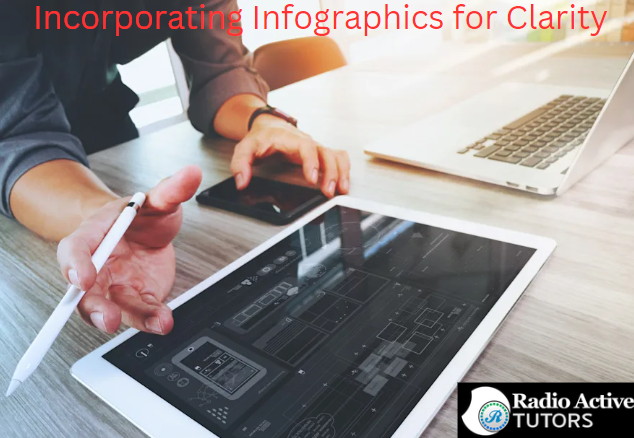New Order Found Please Review the order ASAP for the client to
proceed

Unread Message Found Please check the message ASAP and reply to client


Table of Contents
I. Introduction
II. Understanding Your Audience
III. Setting Presentation Objectives
IV. Research and Content Gathering
V. Crafting an Engaging Narrative
VI. Designing Visual Elements
VII. Mastering Slide Layouts
VIII. Incorporating Infographics for Clarity
IX. Effective Data Representation
X. Utilizing Engaging Fonts and Typography
XI. Integrating Multimedia Elements
XII. Ensuring Consistency Across Slides
XIII. Rehearsing and Refining Delivery
XIV. Handling Q&A Sessions Effectively
XV. Troubleshooting Technical Issues
XVI. Strategies for Audience Engagement
XVII. Overcoming Presentation Anxiety
XVIII. Post-Presentation Follow-Up
XIX. Frequently Asked Questions
XX. Conclusion
A. Importance of Effective Business Administration Presentations
Effective business administration presentations play a pivotal role in the success and growth of any organization. These presentations serve as a dynamic tool for communicating ideas, strategies, and key information to various stakeholders, ranging from executives and employees to clients and investors. The significance lies not only in the content presented but also in the manner it is conveyed. A well-crafted presentation not only informs but engages and inspires, fostering a deeper understanding and commitment from the audience.

In the corporate landscape, where information overload is common, the ability to distill complex concepts into clear, compelling visuals is a valuable skill. Ultimately, the importance of effective business administration presentations extends beyond mere communication; it becomes a catalyst for informed decision-making, collaboration, and the overall success of the organization.
B. Power of Visual Communication in Corporate Settings
In the dynamic realm of corporate settings, the power of visual communication stands as a cornerstone for effective interaction and comprehension. Visual elements transcend language barriers and provide a universal language that resonates with diverse audiences. In a fast-paced business environment, where information is abundant and attention spans are limited, visual communication becomes a catalyst for clarity and impact. Complicated concepts can be distilled into easily digestible visuals, aiding in the swift understanding of complex ideas.
Whether through charts, graphs, or compelling images, visual communication enhances the retention of information, making it an invaluable asset for presentations, reports, and collaborative discussions. The ability to convey messages visually not only captures attention but also fosters a deeper connection between the presenter and the audience, creating a more memorable and persuasive corporate communication experience.
A. Tailoring Content for Various Stakeholders
Tailoring content for various stakeholders in a business administration PowerPoint presentation is a strategic approach that recognizes the diverse needs and interests of different audience groups. Executives, employees, and clients bring unique perspectives to the table, and catering to their specific concerns ensures the information is not only relevant but also resonates on a personal level. For executives, the focus might be on high-level strategy, key performance indicators, and organizational goals.

Employees, on the other hand, may be more interested in how the presented information impacts their day-to-day responsibilities and career growth. Clients may seek insights into how the business can address their needs and deliver value. By customizing the content to address these distinct perspectives, a tailored presentation enhances engagement, fosters understanding, and demonstrates a keen awareness of the varied interests within the corporate ecosystem.
1. Executives
Executives, at the pinnacle of the organizational hierarchy, play a pivotal role in shaping the direction and success of a business. In the context of a business administration PowerPoint presentation, executives are a critical audience whose attention and engagement are paramount. Executives typically seek high-level insights, strategic perspectives, and data-driven analyses that guide decision-making at the organizational level. Presentations targeted at executives should focus on providing a comprehensive overview of key performance indicators, market trends, and the alignment of business strategies with overarching goals.
Clear and concise communication, backed by robust data and a forward-looking vision, is essential to capture the interest of executives who are often pressed for time but require a thorough understanding of the business landscape. Tailoring the presentation to address their strategic concerns not only ensures relevance but also establishes credibility and fosters a sense of collaboration between the presenter and the executive leadership.
2. Employees
Employees, the backbone of any organization, are a vital audience when it comes to business administration PowerPoint presentations. These individuals are on the frontline, contributing to the day-to-day operations and overall success of the company. Presentations aimed at employees should focus on how the information directly impacts their roles, responsibilities, and professional development. Addressing their concerns, such as workflow improvements, training opportunities, and the broader impact on the team, creates a sense of inclusion and relevance.
Visualizing the practical applications of the presented information helps to engage employees, making the content more relatable and fostering a collective understanding of the organization’s goals. Effective communication in these presentations builds a sense of transparency, instills confidence, and encourages a shared commitment to the company’s objectives among the workforce.
3. Clients
Clients, the external partners or customers of a business, represent a crucial audience in the context of a business administration PowerPoint presentation. These individuals or entities are keenly interested in how the business can address their specific needs and deliver value. Presentations targeted at clients should go beyond internal operations and delve into how the company’s products or services can solve their challenges or enhance their experiences. Highlighting success stories, case studies, and demonstrating a deep understanding of the client’s industry fosters confidence and strengthens the business-client relationship.
Clarity, professionalism, and a client-centric approach in the presentation not only showcase the business’s capabilities but also help to align expectations and build trust. Understanding the unique concerns and priorities of clients and tailoring the content accordingly is key to leaving a lasting and positive impression.
A. Defining Clear Goals
Defining clear goals is a foundational step in creating an impactful business administration PowerPoint presentation. Before delving into the content and design aspects, it is essential to articulate the specific objectives the presentation aims to achieve. These goals could range from informing stakeholders about a new strategic initiative to seeking approval for a budget allocation. Clearly outlined objectives not only guide the content creation process but also shape the overall structure and tone of the presentation.

Whether the goal is to educate, persuade, or facilitate decision-making, a well-defined purpose ensures that every element in the presentation aligns cohesively to deliver a focused and compelling message. This clarity not only benefits the presenter in staying on track but also enhances the audience’s understanding, making the presentation more effective in achieving its intended outcomes.
1. Informative Presentations
Informative presentations within the realm of business administration PowerPoint presentations serve as a primary vehicle for knowledge dissemination and understanding. These presentations aim to provide the audience with valuable insights, data, and key information relevant to specific topics. In a business context, informative presentations could cover a wide array of subjects, such as market trends, financial performance, or organizational updates.
The effectiveness of an informative presentation lies in its ability to convey complex information in a clear and accessible manner, utilizing visual aids, charts, and concise text to enhance comprehension. Whether educating employees on new processes, updating executives on industry shifts, or informing clients about product updates, the success of an informative presentation hinges on a well-structured narrative that prioritizes clarity, relevance, and engagement.
2. Decision-Making Presentations
Decision-making presentations in the realm of business administration PowerPoint presentations are strategic tools designed to facilitate crucial choices within an organization. These presentations are often characterized by a focus on data-driven insights, strategic options, and recommendations that guide decision-makers toward the most informed choices. Whether the decisions pertain to resource allocation, project direction, or operational adjustments, these presentations play a pivotal role in presenting the facts, analyses, and potential outcomes.
The success of a decision-making presentation lies in its ability to provide decision-makers with a comprehensive understanding of the situation, offer viable alternatives, and present the associated risks and benefits. Visual aids, clear communication, and a persuasive narrative are essential elements in ensuring that decision-makers are well-equipped to make informed choices that align with the overall goals and objectives of the organization.
3. Training and Development Sessions
Training and development sessions in the context of business administration PowerPoint presentations are instrumental in fostering the growth and skill enhancement of a workforce. These sessions go beyond typical informational presentations, focusing on equipping employees with the knowledge and skills necessary to excel in their roles. The content of such presentations may include onboarding procedures, professional development opportunities, or specific training modules tailored to enhance job performance.
The use of engaging visuals, interactive elements, and clear instructional content is vital to ensure that employees not only understand the information but also retain and apply it effectively. Training and development presentations contribute significantly to employee satisfaction, competence, and, ultimately, the overall success of the organization by investing in the continuous improvement and adaptability of the workforce.
A. Conducting Thorough Market Research
Conducting thorough market research is a foundational step in crafting a business administration PowerPoint presentation that resonates with stakeholders. This process involves a comprehensive exploration of the industry landscape, competitor analysis, and an in-depth understanding of market trends. By integrating the latest data and insights into the presentation, it not only adds credibility but also positions the business as informed and forward-thinking. The market research phase is crucial for tailoring the content to address specific challenges, opportunities, and competitive advantages.

Visual representations of market data through charts and graphs can enhance the audience’s understanding and underscore key points. Overall, a presentation backed by thorough market research not only informs strategic decision-making but also demonstrates a commitment to staying abreast of industry dynamics.
B. Utilizing Data and Statistics
Utilizing data and statistics in a business administration PowerPoint presentation is a strategic approach to bolstering the credibility and persuasiveness of the content. Data-driven presentations not only provide evidence to support key points but also lend a level of objectivity and authority to the information presented. Whether showcasing financial performance, market trends, or project outcomes, incorporating relevant data and statistics helps in making the presentation more compelling and convincing.
Visualizing data through charts, graphs, and infographics enhances the audience’s ability to grasp complex information quickly. Additionally, using concrete numbers fosters transparency and clarity, enabling the audience to make more informed decisions based on quantitative evidence. A well-crafted presentation that effectively utilizes data not only informs but also builds trust and confidence among stakeholders.
C. Incorporating Case Studies
Incorporating case studies into a business administration PowerPoint presentation is a strategic method to illustrate real-world applications of concepts and strategies. Case studies provide a tangible and relatable context, allowing the audience to see how theoretical principles have been successfully implemented in practical scenarios. By showcasing specific examples of challenges faced, solutions implemented, and the resulting outcomes, case studies add depth and authenticity to the presentation. They offer a valuable opportunity for the audience to glean insights from the experiences of others, providing a basis for informed decision-making.
Visualizing the journey of a business or project through a case study not only enhances engagement but also reinforces key messages, making the presentation more impactful and memorable. Incorporating relevant case studies demonstrates a commitment to practicality and a nuanced understanding of the complexities inherent in business administration.
A. Creating a Compelling Storyline
Creating a compelling storyline is the backbone of an effective business administration PowerPoint presentation. Rather than presenting information as a series of disconnected facts, a well-crafted storyline weaves together key elements to form a narrative that engages and captivates the audience. The storyline serves as a roadmap, guiding the audience through the presentation with a clear beginning, middle, and end. It not only makes the content more memorable but also helps in conveying complex ideas in a coherent and relatable manner.

The narrative structure enables presenters to contextualize information, emphasizing the relevance and impact of key points. By incorporating elements such as challenges, solutions, and successes, a compelling storyline adds a human touch to the presentation, resonating with the audience on an emotional level and leaving a lasting impression that goes beyond the data and statistics presented.
B. Utilizing Storytelling Techniques
Utilizing storytelling techniques in a business administration PowerPoint presentation is a powerful strategy to captivate the audience and convey information in a compelling manner. Storytelling goes beyond presenting dry facts and figures; it involves crafting a narrative that resonates with the audience on an emotional level. By incorporating elements of conflict, resolution, and character development, presenters can transform complex business concepts into relatable and memorable stories. This approach not only sustains the audience’s interest but also facilitates better retention of information.
Effective storytelling in presentations involves choosing relatable examples, creating a clear and engaging structure, and using language that evokes emotions. By infusing the presentation with storytelling elements, presenters can make their content more relatable, persuasive, and ultimately more impactful in the minds of the audience.
A. Choosing Appropriate Templates
Choosing appropriate templates is a crucial aspect of crafting a visually appealing and professional business administration PowerPoint presentation. The template sets the overall tone and aesthetic, influencing how the information is perceived by the audience. A well-selected template aligns with the corporate identity, ensuring a cohesive and branded look throughout the presentation. It not only enhances visual appeal but also contributes to the overall readability of the slides.

The choice of colors, fonts, and layout should complement the content and convey a sense of professionalism. Additionally, an appropriate template streamlines the design process, saving time and allowing presenters to focus on the content and delivery. Whether it’s a formal executive briefing or an engaging training session, the right template enhances the visual impact of the presentation, making it more engaging and effective.
B. Selecting Consistent Color Schemes
Selecting consistent color schemes is a fundamental element in the visual design of a business administration PowerPoint presentation. Consistency in color not only contributes to a polished and professional appearance but also aids in conveying a cohesive and unified message. A harmonious color palette, aligned with the company’s branding or theme, enhances visual appeal and creates a sense of coherence across slides. The careful selection of colors can be used to highlight key points, create visual hierarchy, and evoke specific emotions.
Importantly, a consistent color scheme fosters a visually pleasant experience for the audience, reducing cognitive load and facilitating better information retention. Whether using a corporate color palette for a formal executive presentation or choosing vibrant hues for a more creative context, the thoughtful selection and application of color contribute significantly to the overall success of the presentation.
C. Effective Use of Images and Graphics
The effective use of images and graphics is a key strategy in enhancing the visual impact and engagement of a business administration PowerPoint presentation. Visual elements not only break the monotony of text but also serve as powerful tools to convey complex ideas and evoke emotions. Relevant and high-quality images can add context, make concepts more tangible, and create a memorable visual experience for the audience. Graphics, such as charts and diagrams, are invaluable for presenting data in a clear and digestible format.
The strategic placement of images and graphics throughout the presentation not only captures attention but also reinforces key messages. It’s essential to ensure that visuals align with the overall theme, maintain consistency in style, and contribute to the narrative flow. By incorporating a thoughtful mix of images and graphics, presenters can elevate the overall quality of their presentation and effectively communicate their message to the audience.
A. Introduction Slide
The introduction slide in a business administration PowerPoint presentation serves as the gateway to the content, setting the tone and capturing the audience’s attention from the start. This slide is an opportunity to provide a brief overview of the presentation’s purpose, agenda, and what the audience can expect. An effective introduction slide introduces the presenter, establishes the relevance of the topic, and outlines the key points to be covered.

It should be visually appealing, incorporating the chosen template’s design elements and consistent color schemes. The introduction slide is a critical component in creating a positive first impression and building anticipation for the information to follow. It serves as a roadmap, guiding the audience through the presentation and ensuring a smooth and engaging transition into the core content.
B. Agenda Slide
The agenda slide in a business administration PowerPoint presentation serves as a navigational tool, offering a structured overview of what the audience can expect throughout the presentation. Positioned early in the deck, the agenda slide outlines the key sections or topics that will be covered, providing a roadmap for the audience. It plays a crucial role in managing expectations and creating a sense of organization. The agenda slide typically includes a concise list of main points, allowing the audience to grasp the presentation’s structure and flow.
This slide not only enhances clarity but also helps in keeping the audience engaged by giving them a sense of the journey ahead. A well-designed agenda slide contributes to the overall professionalism of the presentation and ensures that the audience remains focused and aligned with the presenter’s key objectives.
C. Content Slides
Content slides are the heart of a business administration PowerPoint presentation, where the core information is presented in detail. These slides delve into the substance of the presentation, providing in-depth insights, key data, and supporting information on each topic. Effectively organized and visually appealing content slides enhance the audience’s understanding and retention of crucial information. They often include bullet points, visuals, and concise text to convey complex ideas in a digestible format.
Consistency in design elements, such as fonts, colors, and layout, maintains a professional and cohesive look throughout the presentation. Content slides serve as a platform for the presenter to elaborate on key concepts, share analyses, and engage the audience with meaningful content. Striking the right balance between information and visual elements is crucial to keeping the audience both informed and engaged during this pivotal section of the presentation.
D. Conclusion and Call-to-Action Slides
The conclusion and call-to-action slides are integral components of a business administration PowerPoint presentation, providing closure and motivating the audience to take specific steps. The conclusion slide summarizes the key takeaways, reinforcing the main points discussed throughout the presentation. It serves as a moment to leave a lasting impression on the audience, emphasizing the significance of the information presented. The call-to-action slide, positioned strategically at the end, prompts the audience to act on the insights gained during the presentation.
Whether it’s encouraging further discussion, implementing recommended strategies, or exploring collaboration opportunities, the call-to-action slide guides the audience towards tangible next steps. Both slides should be crafted with clarity, using concise language and compelling visuals to leave a memorable impact and inspire the audience to apply the knowledge acquired in the presentation.
A. Benefits of Infographics in Presentations
Infographics play a pivotal role in enhancing the effectiveness of business administration PowerPoint presentations by distilling complex information into visually appealing and easily understandable formats. The benefits of incorporating infographics lie in their ability to convey data, trends, and relationships with clarity and efficiency. In a business context, where information can be intricate and overwhelming, infographics provide a visual shortcut, enabling the audience to grasp key concepts quickly. By combining text, charts, and images, infographics create a cohesive visual narrative, making it easier for the audience to retain and recall information.

These visual elements not only enhance comprehension but also add a dynamic and engaging dimension to the presentation. Infographics are particularly valuable when presenting statistical data, process flows, or comparisons, as they transform numerical information into accessible and memorable visual stories, contributing significantly to the overall impact of the business administration powerpoint presentation.
B. Tools and Resources for Creating Infographics
In the realm of business administration PowerPoint presentations, the creation of compelling infographics is facilitated by a variety of tools and resources designed to simplify the design process. Platforms like Canva, Piktochart, and Venngage offer user-friendly interfaces, pre-designed templates, and a wealth of graphical elements that empower presenters to craft visually appealing infographics without the need for extensive design skills. Additionally, graphic design software such as Adobe Illustrator and Microsoft PowerPoint itself provide advanced customization options for those seeking more control over the infographic’s layout and elements.
Online databases and repositories offer a plethora of icons, images, and charts that can be seamlessly integrated into infographics. By leveraging these tools and resources, presenters can effortlessly elevate the visual impact of their business administration powerpoint presentations, ensuring that complex information is conveyed with clarity and engagement.
A. Presenting Data Clearly
Presenting data clearly in a business administration PowerPoint presentation is a critical aspect of effective communication. Clarity in data presentation ensures that the audience can quickly understand and interpret the information being conveyed. Utilizing charts, graphs, and tables with appropriate labels and legends is key to simplifying complex datasets. Choosing the right type of visualization for the specific data—whether it’s a bar chart, pie chart, or line graph—enhances comprehension.

Furthermore, emphasizing trends, outliers, or key data points with color and formatting assists in guiding the audience’s focus. A well-organized and visually appealing presentation of data not only facilitates better understanding but also strengthens the persuasiveness of the message. Striking a balance between detail and simplicity ensures that the audience can extract meaningful insights from the data without being overwhelmed by excessive information.
B. Using Charts and Graphs
Using charts and graphs in a business administration PowerPoint presentation is a strategic approach to visually represent complex data and trends. These visual elements serve as powerful tools to distill intricate information into easily digestible and comprehensible formats. Bar charts, line graphs, pie charts, and scatter plots, among others, provide a dynamic and intuitive way to showcase relationships, comparisons, and patterns within data sets. The choice of the appropriate chart or graph depends on the type of data being presented and the key messages to be conveyed.
The strategic use of colors, labels, and legends enhances clarity, making it easier for the audience to interpret and derive insights from the visualized information. By incorporating charts and graphs thoughtfully, presenters can elevate the overall quality of their presentation, enabling the audience to engage more effectively with complex data and facilitating a deeper understanding of the business insights being communicated.
C. Avoiding Data Overload
Avoiding data overload is a crucial consideration when creating a business administration PowerPoint presentation. While data is essential for supporting key points and substantiating arguments, overwhelming the audience with excessive information can lead to confusion and disengagement. The challenge lies in selecting the most relevant and impactful data that directly aligns with the presentation’s objectives. Presenters should focus on quality over quantity, choosing data points that are essential for conveying the message effectively. Utilizing concise and clear visualizations, such as charts or graphs, can help distill complex information into more digestible formats.
Additionally, providing context and highlighting key insights from the data prevents the audience from feeling overwhelmed and ensures that they can absorb and retain the most important aspects of the presentation. Striking the right balance between depth and simplicity is essential for delivering a presentation that is informative, engaging, and memorable.
A. Best Practices for Font Selection
Selecting the right fonts is a critical aspect of designing an effective business administration PowerPoint presentation. Best practices for font selection involve prioritizing clarity, readability, and consistency. Opting for clean and legible fonts, such as Arial, Calibri, or Helvetica, ensures that the text is easily understood, even from a distance. It’s advisable to limit the use of fonts to maintain a professional and cohesive look throughout the presentation; typically, using two complementary fonts is sufficient. Emphasizing key points through variations in font size, boldness, or italics aids in guiding the audience’s attention.

Consideration of the audience and the context of the presentation is also crucial—more formal presentations may call for traditional fonts, while creative or informal settings may allow for a bit more flexibility. Ultimately, the goal is to strike a balance between visual appeal and legibility, enhancing the overall professionalism and impact of the business administration powerpoint presentation.
B. Importance of Readability
The importance of readability cannot be overstated in the context of a business administration PowerPoint presentation. Readability is the linchpin of effective communication, ensuring that the audience can effortlessly comprehend the information being presented. Clear and readable fonts, appropriate font sizes, and a well-organized layout contribute to the overall accessibility of the content. Adequate contrast between text and background further enhances readability, preventing visual strain for the audience. Consistency in formatting, such as maintaining uniform font styles and sizes, fosters a cohesive visual experience, reducing cognitive load.
Whether presenting to executives, employees, or clients, prioritizing readability not only conveys professionalism but also facilitates a seamless flow of information, allowing the audience to focus on the content rather than struggling with deciphering text. In essence, readability is a fundamental element in crafting presentations that are engaging, impactful, and conducive to effective communication in the realm of business administration.
A. Adding Videos for Impact
Adding videos to a business administration PowerPoint presentation is a dynamic strategy to enhance impact and engagement. Videos bring a multi-sensory dimension to the presentation, capturing the audience’s attention and conveying information in a compelling manner. Whether it’s showcasing testimonials, product demonstrations, or corporate messages, videos provide a visual and auditory experience that resonates effectively. The dynamic nature of videos helps break the monotony of static slides, keeping the audience attentive and interested.

Additionally, videos have the power to convey complex ideas in a concise and memorable format. Integration of videos allows presenters to leverage storytelling and emotional appeal, fostering a deeper connection with the audience. It’s crucial to ensure that the videos are of high quality, relevant to the presentation’s objectives, and seamlessly integrated into the overall narrative to maximize their impact in a business administration context.
B. Incorporating Audio for Emphasis
Incorporating audio for emphasis in a business administration PowerPoint presentation is a strategic technique to heighten engagement and underscore key points. Well-timed audio elements, such as background music, sound effects, or voiceovers, can add a dynamic layer to the presentation, creating a more immersive experience for the audience. Audio can be used to punctuate transitions between slides, signal important information, or enhance the emotional impact of specific segments. However, it’s crucial to exercise moderation and ensure that the audio complements the overall tone and content of the presentation.
Thoughtful incorporation of audio elements not only captures attention but also reinforces the message, making the presentation more memorable and impactful in a business administration setting. Whether used for emphasis, storytelling, or creating a specific atmosphere, audio elements contribute to a richer and more engaging presentation experience.
A. Standardizing Fonts and Colors
Standardizing fonts and colors is a fundamental practice in designing a cohesive and professional business administration PowerPoint presentation. Consistency in font selection ensures that the text maintains a uniform and polished appearance throughout the slides. Choosing a limited set of complementary fonts, such as for headings and body text, contributes to visual harmony. Similarly, standardizing colors across the presentation not only aligns with the brand identity but also enhances the overall aesthetic appeal.

Consistent use of colors for backgrounds, text, and graphical elements creates a cohesive visual language, making the presentation more visually appealing and easier to follow. This standardization not only reflects attention to detail but also reinforces the professionalism of the presentation, helping to build a visual identity that resonates with the audience and supports effective communication of business concepts.
B. Creating a Cohesive Design Flow
Creating a cohesive design flow in a business administration PowerPoint presentation is pivotal for ensuring a seamless and visually engaging experience for the audience. It involves maintaining a consistent and harmonious visual theme throughout the slides, encompassing elements like fonts, colors, imagery, and slide layouts. A cohesive design flow facilitates a natural progression of ideas, guiding the audience through the presentation effortlessly. Transitions between slides should be smooth, with each visual element complementing the overall theme.
This cohesiveness not only adds a professional touch but also aids in conveying a unified message, reinforcing the brand identity or desired atmosphere. Whether presenting to executives, employees, or clients, a well-structured and visually consistent design flow contributes significantly to the overall impact and effectiveness of the business administration powerpoint presentation.
A. Importance of Rehearsals
The importance of rehearsals in a business administration PowerPoint presentation cannot be overstated. Rehearsing allows the presenter to familiarize themselves with the content, fine-tune the delivery, and identify potential areas for improvement. It provides an opportunity to refine the timing, ensuring that the presentation stays within the allocated timeframe. Additionally, rehearsals help the presenter build confidence, enhance their ability to respond to questions, and adapt to unforeseen circumstances.

The more familiar the presenter becomes with the material, the more effectively they can engage with the audience, convey key messages, and maintain a polished and professional demeanor. Rehearsing is a crucial step in ensuring a smooth, well-executed presentation that leaves a lasting and positive impression on the audience in the realm of business administration.
B. Seeking Feedback for Improvement
Seeking feedback is a vital step in the continuous improvement of a business administration PowerPoint presentation. External perspectives, whether from colleagues, mentors, or trusted individuals, provide valuable insights that might not be apparent to the presenter. Constructive feedback can encompass various aspects, including content clarity, visual design, and delivery style. By actively seeking feedback, presenters have the opportunity to refine their message, address potential gaps, and enhance the overall effectiveness of their presentation.
This iterative process not only contributes to personal growth but also ensures that the presentation aligns more closely with the expectations and needs of the audience. Embracing feedback as a tool for improvement is a hallmark of effective communication in the business realm, fostering a culture of continuous learning and refinement.
A. Preparing for Common Questions
Preparing for common questions is a strategic and proactive approach in the realm of business administration PowerPoint presentations. Anticipating queries that the audience might pose allows presenters to be well-prepared, demonstrating a thorough understanding of the subject matter and fostering credibility. By addressing potential questions within the presentation or during a dedicated Q&A session, presenters can steer the narrative, ensuring that key points are emphasized and any concerns are proactively addressed.

This preparation not only showcases the presenter’s expertise but also contributes to a more confident and polished delivery. It’s an opportunity to reinforce key messages, provide additional context, and engage with the audience in a way that builds trust and transparency. Overall, being prepared for common questions is a strategic element in delivering a business administration presentation that is informative, convincing, and capable of withstanding audience inquiries.
B. Techniques for Addressing Unexpected Questions
Addressing unexpected questions is a skill that can elevate the effectiveness of a business administration PowerPoint presentation. Techniques for handling unforeseen inquiries involve staying calm, composed, and demonstrating adaptability. When faced with an unexpected question, it’s essential to listen carefully, clarify any ambiguities, and respond thoughtfully. If the answer is not immediately apparent, presenters can acknowledge the question, express willingness to delve deeper into the topic, and perhaps offer to follow up with additional information later.
Maintaining a confident and positive demeanor is key, as it instills trust in the audience and reflects the presenter’s expertise. Additionally, presenters can use unexpected questions as opportunities to reinforce key messages, pivot the discussion back to critical points, or even invite audience input to foster engagement. Overall, adeptly addressing unexpected questions showcases flexibility and enhances the presenter’s credibility, contributing to a successful business administration powerpoint presentation.
A. Preparing for Technical Glitches
Preparing for technical glitches is a prudent measure in ensuring a smooth and professional business administration PowerPoint presentation. Technical issues, such as projector malfunctions or software hiccups, can occur unexpectedly, potentially disrupting the flow of the presentation. Presenters can mitigate these challenges by arriving early to the venue, testing equipment, and having contingency plans in place. Saving a backup copy of the presentation on a portable device or in the cloud ensures accessibility even if the primary device fails.

Familiarity with the presentation software and hardware is crucial, empowering presenters to troubleshoot swiftly. Additionally, maintaining composure and adapting to unforeseen technical glitches with a calm and professional demeanor helps instill confidence in the audience. By proactively preparing for technical challenges, presenters can navigate potential disruptions seamlessly, delivering a business administration powerpoint presentation that is resilient and impactful.
B. Having Backup Plans in Place
Having backup plans in place is a prudent strategy to mitigate uncertainties and ensure the resilience of a business administration PowerPoint presentation. These backup plans extend beyond technical contingencies and encompass various aspects of the presentation. For instance, having alternative ways to convey key messages, additional data points, or supplementary visuals can prove invaluable in adapting to unforeseen circumstances or audience dynamics.
Additionally, presenters can prepare alternative routes in the narrative or strategies to handle unexpected shifts in the discussion. Having backup plans not only demonstrates foresight but also allows presenters to remain adaptable and responsive in dynamic presentation scenarios. Whether it’s addressing unexpected questions, technical glitches, or alterations in the schedule, a well-thought-out backup plan contributes to the presenter’s confidence and the overall success of the business administration powerpoint presentation.
A. Encouraging Participation
Encouraging participation is a dynamic approach to fostering engagement and interaction in a business administration PowerPoint presentation. Rather than being a one-way transfer of information, presentations become more impactful when the audience is actively involved. Techniques such as posing thought-provoking questions, incorporating interactive polls, or encouraging discussions stimulate participation. This engagement not only holds the audience’s attention but also creates a more memorable and collaborative experience.

Presenters can invite audience members to share insights, experiences, or perspectives, fostering a sense of inclusion and relevance. Incorporating interactive elements not only breaks the monotony but also ensures that the audience remains attentive and invested in the content. By nurturing a participative environment, presenters can elevate the overall effectiveness of their business administration powerpoint presentation, turning it into a dynamic and mutually beneficial exchange of ideas.
B. Using Polls and Surveys
Utilizing polls and surveys is a strategic method to enhance engagement and gather valuable insights in a business administration PowerPoint presentation. Integrating interactive polls and surveys allows presenters to gauge the audience’s opinions, preferences, or understanding of specific topics. This real-time feedback not only provides a pulse check on the audience’s comprehension but also adds an element of interactivity, making the presentation more dynamic. Polls can be strategically placed to spark discussions, gather consensus on decisions, or simply to break up the presentation flow.
Surveys at the end of the presentation serve as a tool for deeper reflection and feedback collection, helping presenters understand audience perspectives and areas for improvement. This interactive approach not only keeps the audience actively involved but also transforms the presentation into a collaborative experience, promoting a two-way communication dynamic in the business administration context.
A. Practical Tips for Calming Nerves
Calming nerves before a business administration PowerPoint presentation is crucial for delivering a confident and effective talk. Practical tips for managing nervousness include thorough preparation – knowing the material inside out builds confidence. Taking deep breaths and practicing mindfulness techniques can help in centering oneself and alleviating anxiety. Arriving early at the venue to familiarize oneself with the surroundings and the technical setup provides an added sense of control. Visualizing a successful presentation outcome and positive audience interaction can shift the focus from anxiety to accomplishment.

Additionally, maintaining a positive mindset and reframing nervous energy as excitement can contribute to a more confident and poised delivery. Finally, accepting that a bit of nervousness is normal and can be beneficial for maintaining focus and energy during the presentation is key. By incorporating these practical tips, presenters can manage pre-presentation nerves and ensure a more relaxed and effective performance.
B. Building Confidence Through Preparation
Building confidence through thorough preparation is a foundational principle for a successful business administration PowerPoint presentation. Knowing the content, understanding the key messages, and being familiar with the intricacies of the presentation create a solid foundation for confidence. Adequate preparation allows presenters to navigate through the material seamlessly, respond to questions with authority, and adapt to unexpected situations with ease. Rehearsing the presentation multiple times, both alone and in front of trusted colleagues or friends, further solidifies confidence.
Familiarity with the technology and logistics involved, such as the presentation software and equipment, contributes to a sense of control. The more prepared a presenter is, the more they can focus on delivering a compelling message, engaging with the audience, and showcasing their expertise in the field of business administration. Confidence born out of meticulous preparation is a key factor in creating a lasting and positive impact on the audience.
A. Sharing Presentation Materials
Sharing presentation materials is a strategic practice that extends the impact of a business administration PowerPoint presentation beyond the live event. Providing attendees with access to presentation materials, such as slides, handouts, or supplementary resources, enhances the overall value of the presentation. This sharing fosters continued engagement as the audience can review and reinforce key concepts at their own pace. Additionally, it serves as a reference for those who may have missed the live presentation, ensuring that the information remains accessible.

Digital platforms, email distribution, or collaboration tools can be employed to efficiently share materials. This practice not only showcases transparency but also positions the presenter as a resourceful and collaborative professional in the business administration context, fostering a lasting connection with the audience.
B. Gathering Feedback for Continuous Improvement
Gathering feedback is a crucial step in the pursuit of continuous improvement in a business administration PowerPoint presentation. Soliciting feedback from the audience provides valuable insights into the effectiveness of the presentation, the clarity of the message, and the engagement level of the audience. This feedback loop is a valuable tool for presenters to assess what worked well and identify areas that might need refinement. Whether through surveys, direct discussions, or online feedback forms, actively seeking input demonstrates a commitment to excellence and a willingness to adapt and evolve.
By leveraging constructive feedback, presenters can refine their delivery style, enhance content clarity, and make strategic adjustments to better align with audience expectations. This iterative process of gathering and incorporating feedback not only refines the current presentation but also contributes to the continuous growth and improvement of the presenter’s overall communication skills in the field of business administration.
A. How long should a business administration presentation be?
The optimal duration for a business administration powerpoint presentation can vary based on factors such as the complexity of the content, the depth of analysis required, and the preferences of the audience. Generally, a good rule of thumb is to aim for a presentation length that allows for thorough coverage of key points without overwhelming the audience. For formal settings, such as executive briefings or client meetings, presentations often range from 15 to 30 minutes, ensuring a focused and concise delivery.
In more extensive or training-oriented presentations, a duration of 45 to 60 minutes may be appropriate, allowing for a more in-depth exploration of topics. However, regardless of the specific timeframe, it’s crucial to prioritize quality over quantity, keeping the audience’s attention and engagement in mind throughout the presentation. Additionally, providing opportunities for questions or interactive elements can contribute to a well-rounded and effective business administration powerpoint presentation.
B. What tools can I use for creating visually appealing presentations?
There are several powerful tools available for creating visually appealing presentations in the realm of business administration. Microsoft PowerPoint remains a widely used and versatile option, offering a range of design features, templates, and customization options. For those seeking more advanced design capabilities, Adobe Spark and Canva provide user-friendly interfaces and a plethora of visually stunning templates. Prezi offers a unique approach with its zoomable canvas, allowing for dynamic and engaging presentations.

Additionally, tools like Google Slides provide collaborative features and cloud-based accessibility. Infographic-specific tools such as Piktochart or Venngage are excellent for incorporating data visualizations. Each tool comes with its own strengths, catering to different preferences and skill levels. The key is to choose a tool that aligns with the specific requirements of the business administration powerpoint presentation, ensuring a visually appealing and impactful result.
C. How do I keep my audience engaged throughout the presentation?
Keeping your audience engaged throughout a business administration presentation involves a combination of thoughtful content delivery, interactive elements, and effective communication strategies. Start by clearly outlining the purpose and relevance of your presentation to capture immediate interest. Break down the content into digestible sections, using visuals, infographics, and concise text to maintain attention. Incorporate interactive elements like polls, surveys, or brief discussions to actively involve your audience. Vary your delivery style, including storytelling, case studies, or real-world examples to add interest and relevance.
Maintain a conversational tone, encourage questions, and ensure a good pace to avoid monotony. Eye contact, body language, and enthusiasm are crucial in conveying your passion for the topic and keeping your audience tuned in. Lastly, consider the timing of your presentation, ensuring it aligns with the audience’s expectations and allows for breaks if necessary. By incorporating these strategies, you can create a dynamic and engaging business administration powerpoint presentation that captivates your audience from start to finish.
A. Recap of Key Points
A recap of key points serves as a powerful conclusion in a business administration presentation, reinforcing the main ideas and leaving a lasting impression on the audience. Summarizing the key takeaways provides clarity and ensures that crucial information is firmly anchored in the minds of the listeners. This recap is an opportunity to emphasize the most critical aspects of the presentation, highlighting the benefits, insights, or action items you want the audience to remember.
Utilizing concise language and perhaps visual aids, such as a summary slide, reinforces the central messages and contributes to better information retention. A well-crafted recap not only reinforces your expertise but also provides a structured and cohesive closure to your business administration powerpoint presentation, leaving a positive and impactful lasting impression on your audience.
B. Encouragement for Implementing Effective Presentation Strategies
Encouraging the implementation of effective presentation strategies is pivotal for success in business administration. Acknowledging the impact of well-crafted presentations on communication and decision-making, it’s essential to inspire individuals to adopt and refine their presentation skills. Emphasizing the value of clarity, engagement, and visual appeal, leaders can motivate their teams to embrace techniques that resonate with diverse audiences. Encouragement for incorporating interactive elements, seeking feedback, and continuously refining presentation approaches fosters a culture of continuous improvement. By recognizing the positive outcomes that effective presentations can yield, individuals are motivated to invest time and effort into honing their skills, ultimately contributing to more persuasive, memorable, and impactful business administration presentations.

Hard Binding Dissertation ( 4 Key Features)
1 year(s) ago
Psychology dissertation topics (5 Major Areas)
1 year(s) ago
Dissertation editor (5 Key Services)
1 year(s) ago
Dissertation Coaching (7 Main Benefits)
1 year(s) ago
Dissertation Acknowledgement Format ( 6 Key Tips)
1 year(s) ago
Psychology Dissertation Topics ( 7 Main Ideas)
1 year(s) ago
Dissertation Binding ( Key Tips)
1 year(s) ago
Dissertation editing services (8 Key Areas)
1 year(s) ago
Dissertation template (Student's Guide)
1 year(s) ago
How to come up with a dissertation topic (9 Key Steps)
1 year(s) ago
Radio Active Tutors is a freelance academic writing assistance company. We provide our assistance to the numerous clients looking for a professional writing service.
Need academic writing assistance ?
Order Now
